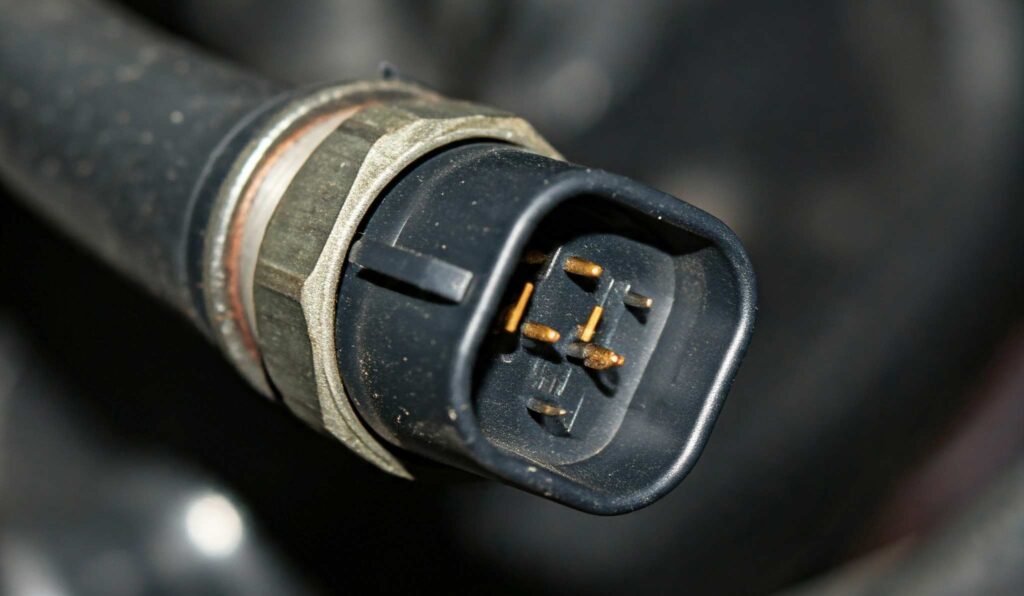If you’ve noticed that your car runs better with the temperature sensor unplugged, you’re not alone. Many people have experienced this strange improvement in performance, leaving them wondering what’s going on under the hood. It’s not as simple as it sounds, though. There’s a complex relationship between the engine temperature sensor (also known as the coolant temperature sensor) and how your vehicle’s ECU (engine control unit) adjusts fuel injection, timing, and other key parameters.
What Does the Temp Sensor Do?
First, it’s important to understand what this sensor actually does. The temperature sensor monitors the engine’s coolant temperature and sends this information to the ECU. The ECU uses that data to adjust fuel-air mixture, ignition timing, and other engine controls. When the engine is cold, it needs more fuel to run smoothly. As it heats up, less fuel is required. The sensor helps to make sure the engine gets the right amount of fuel, ensuring efficient combustion.
But if the temp sensor is faulty, the ECU can get incorrect readings. Faulty sensors could tell the ECU that the engine is cold when it’s actually warmed up, causing your car to run richer than it needs to.
Why Does Your Car Run Better Unplugged?
Now, here’s where things get interesting. When you unplug the temp sensor, the ECU typically defaults to a pre-programmed setting, called “fail-safe mode.” In this mode, the ECU stops using the sensor data and assumes that the engine is at a moderate temperature—usually around 80°C (176°F), a balanced point for most vehicles. With no real data to rely on, the car’s computer reverts to a conservative fuel-air mixture and timing settings. This could explain why your car seems to run better.
ECU fail-safes are designed to prevent engine damage when something goes wrong with the sensor data. However, the settings in this mode tend to be on the richer side, meaning more fuel is burned, which can improve short-term performance, especially if the car was running too lean before.
Is Running Without a Temp Sensor Safe?
While your car may feel better with the sensor unplugged, it’s not an ideal long-term solution. When the ECU is in fail-safe mode, it ignores real-time data, which can lead to a range of issues. You might experience higher fuel consumption, higher emissions, and potential damage to the catalytic converter due to unburned fuel passing through the exhaust system. Running rich can foul your spark plugs and lead to carbon buildup in the engine.
More importantly, you won’t get accurate temperature readings on your dashboard, which means you might not notice if your engine overheats—a situation that can quickly cause serious damage.
Common Symptoms of a Faulty Temp Sensor
Some common signs that your temperature sensor is not working correctly include:
- Poor fuel economy due to incorrect air-fuel mixture
- Rough idling or stalling
- Difficulty starting, especially in cold weather
- Black smoke from the exhaust, indicating excess fuel
Replacing a bad sensor is usually inexpensive, with the part costing around $15-$50 depending on your vehicle make and model.
The Role of the Oxygen Sensor
The oxygen sensor, another key component, works closely with the temperature sensor. The O2 sensor monitors the level of oxygen in the exhaust gases, helping to fine-tune the air-fuel ratio. If the temp sensor fails and forces the engine into a rich running state, the oxygen sensor may pick this up and trigger a check-engine light. However, because fail-safe mode overrides real-time data, the O2 sensor may not correct the air-fuel ratio as effectively.
Diagnosing the Problem
If your car runs better with the temp sensor unplugged, it’s essential to figure out if the sensor itself is faulty or if there’s a problem with the wiring or the ECU. One way to test this is by using an OBD-II scanner to check for error codes. Common error codes related to the coolant temperature sensor include P0115, P0116, P0117, and P0118.
Alternatively, you can use a multimeter to measure the resistance of the sensor at various temperatures to see if it falls within the manufacturer’s specifications.
Should You Replace the Sensor?
If your car’s running better without the sensor, that doesn’t mean you should keep driving without it. Continuing to do so could result in long-term issues, including poor fuel economy, excessive emissions, and engine wear. A replacement temperature sensor is relatively cheap and easy to install. Most mechanics recommend swapping it out as soon as you notice a problem, especially if your car is throwing an error code.

